Do you understand so many varieties and places of origin as a required course for veteran coffee drivers?
Latte, macchiato, cappuccino, these espresso are almost everyone's initial understanding of coffee. We don't comment on the pros and cons of Starbucks espresso, but it does enlighten many people's love of coffee. I also used my pocket money to save stars a long time ago, and later, I gradually found that coffee without milk and milk is true love.
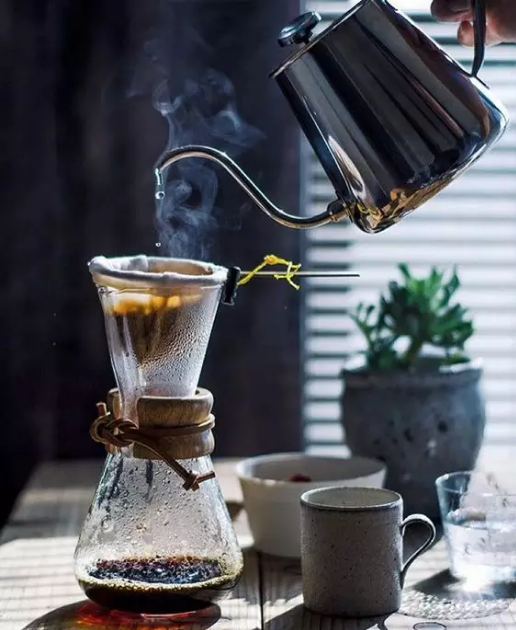
With regard to coffee, I have introduced a lot of basic information about coffee in my article "from a bean to a cup of coffee, everything you need about coffee here". In this issue, let's go a little deeper and talk about the varieties of coffee.
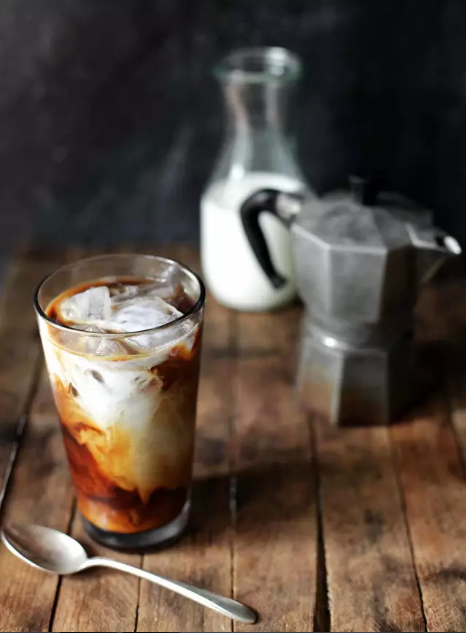
Catalogue
| 01 | what is a single coffee?
02 | Coffee type
Which of the different varieties is superior or inferior?
03 | Coffee origin
Africa, Asia, South America, Central America
1
What is a single coffee?
When it comes to the most popular drink in cafes today, all kinds of fancy coffee are definitely the main force. With Italian concentration as the bottom, add milk, foam, water, or even wine, juice, chocolate, a variety of combinations, as long as it tastes good, it is a good fancy coffee.

These drinks are delicious and can even be said to promote the popularity of coffee. However, just as some wine lovers like the delicate and elegant Pinot Noir of Burgundy, and some chocolate gluttons like the fruity Malagasy Criollo, coffee can be made from different varieties and can be combined with unlimited flavors under different climate and soil conditions.
This exquisite thing with local characteristics, the flavor of each variety, each country, and even each producing area is different. Although it is difficult to trace the origin of some coffee beans because of many restrictions, this does not prevent gluttons from pursuing the most pure and authentic taste of coffee. As a result, a single variety of single-origin coffee came into being.
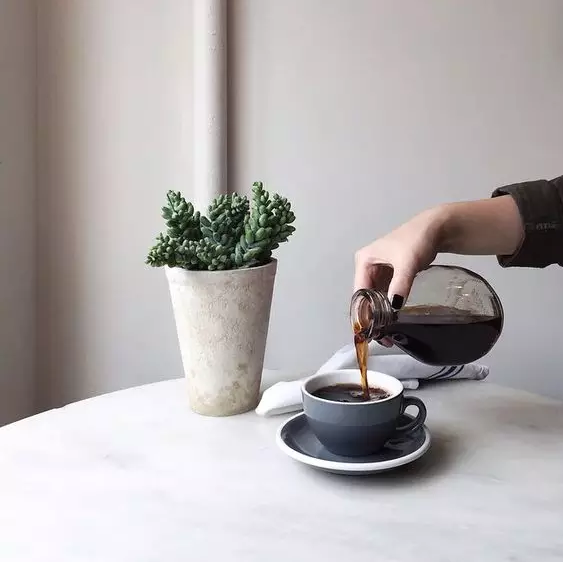
2
The variety of coffee
Coffee as an iconic tropical crop, although there are many varieties, but in the final analysis, there are only three mainstream native tree species. Arabica, Robusta and Liberia.
Among them, Liberia is a native tree species in West Africa, although the growth adaptability is very strong, but the planting area is very limited, which is rarely seen in daily cafes. So let's focus on Arabica and Robusta.
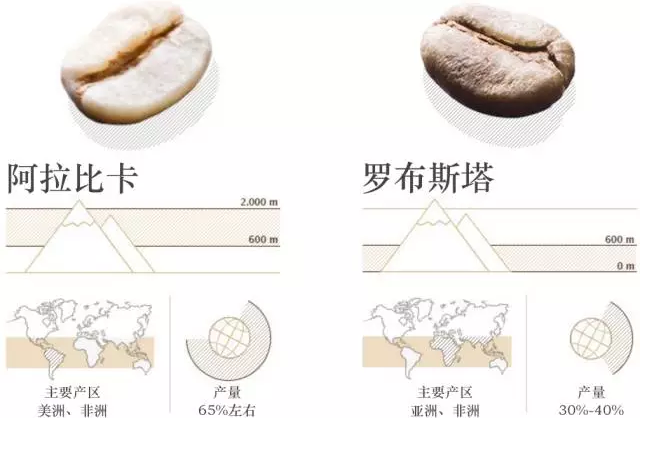
Robusta has a relatively rough taste, usually with obvious bitterness, low acidity, mellow taste and high caffeine content. This variety does not have high requirements for the growth environment, rough physique, not easy to get sick, coupled with the general taste, has gradually become synonymous with instant and cheap coffee. Worldwide, Robusta accounts for roughly 30%, 40% of production.
Arabica, a high-quality coffee variety native to Ethiopia, is generally grown in areas with higher elevations and a relatively cool climate (generally speaking, high-quality coffee comes from mountains and plateaus). This is the best native coffee variety with complex aroma and high acidity. The coffee made from it is usually sour, sweet and bitter, and will produce infinitely complex aromas due to the local conditions of different regions, such as fruit, caramel, chocolate and so on. Arabica accounts for about 65% of the world's total coffee production, and almost all high-quality cafes use Arabica coffee beans.
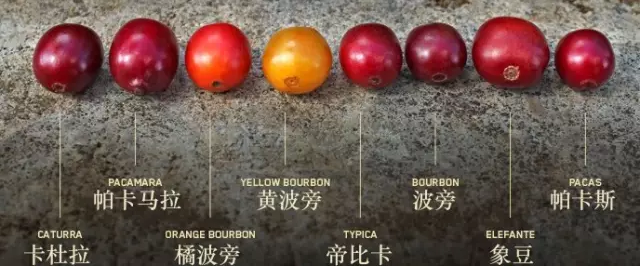
The three native coffee tree species also give rise to many varieties with different tastes, such as the sweet bourbon, the distinctive Tibica, the fruit-flavored SL28 and SL34, and the blooming, floral rose summer, etc. (most of these varieties belong to the Arabica family). The distinctive characteristics of these coffee varieties, the flavor effects brought by the treatment methods and the characteristics of the producing areas are combined to form a unique style of coffee beans.

3
The origin of coffee
As a widely cultivated cash crop, the demand for the growing environment of coffee is mainly in the following aspects:
Climate: within the Tropic of Cancer, the climate is relatively cool and frost-free in winter. In general, different varieties of coffee have slightly different requirements for light, and sometimes proper shading can even increase the complexity of coffee taste.
Rainfall: moderate rainfall, annual precipitation 1500~2259mm
Soil: the drainage performance is good, and the soil with volcanic ash texture is the most suitable.
Altitude: most of the elevations are distributed in the area of 20000m. Generally speaking, the higher the altitude, the better. Most high-quality coffee comes from plateaus or mountains, and some Central American producing areas even grade coffee on the basis of altitude.
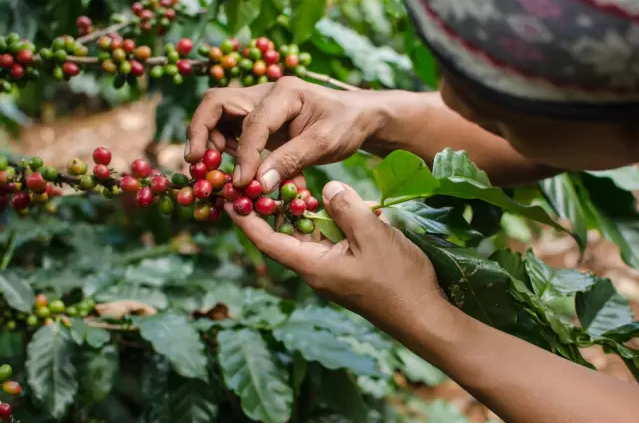
Coffee is grown in Africa, Asia, America and some tropical islands in Oceania. Although it is planted in a wide range of areas, coffee from different places has its own unique flavor.
Africa
Africa is recognized as the birthplace of coffee, although coffee is produced throughout the continent, but thanks to the high altitude of East Africa and the common volcanic soil, high-quality coffee in Africa usually comes from Ethiopia, Kenya, Tanzania and other countries.
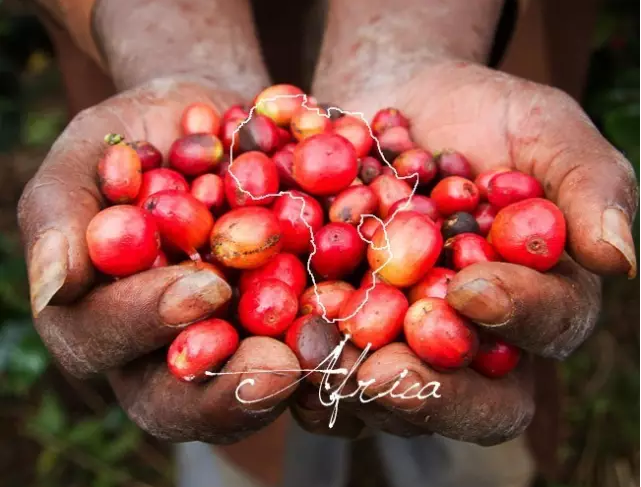
Ethiopia: located in northeast Africa, as a recognized birthplace of coffee, the quality of coffee is very outstanding. Coffee here is usually native to Ethiopia, Heirloom, taste very diverse, flowers, fruit, everything, washed beans are usually delicate and elegant, sun-dried beans are unrestrained and charming. Sidamo, Harrar and Yirgacheffe are the three most famous producing areas in Ethiopia, among which Yirgacheffe is one of the best quality coffee producing areas in the world. Yirgacheffe washed beans have extremely strong aroma, full of citrus, floral aromas, delicate and elegant taste, while sun beans have unrestrained fruit aromas, unique and delicious taste.
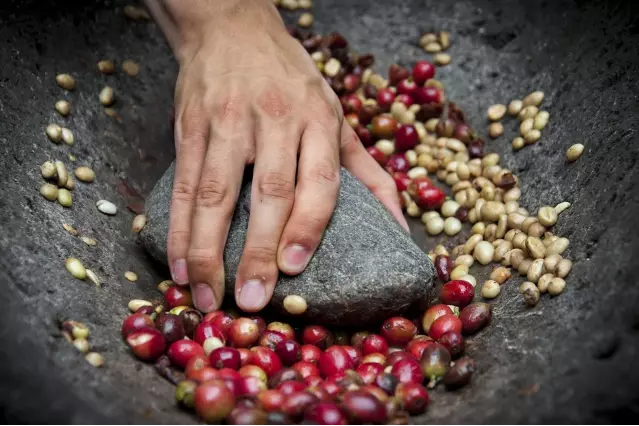
Ethiopia, Heirloom
Kenya: next to Ethiopia, the coffee is famous for its bright and complex berry aromas, sweet taste and just the right acidity. The best quality coffee in Kenya comes from Nyeri and Kirinyaga in the middle. Thanks to the volcanic soil near the extinct volcano Mount Kenya, the coffee here is fruity and of high quality. The common coffee varieties SL28 and SL34, which have a significant fruit flavor, are selected from the Scott laboratory in Kenya.
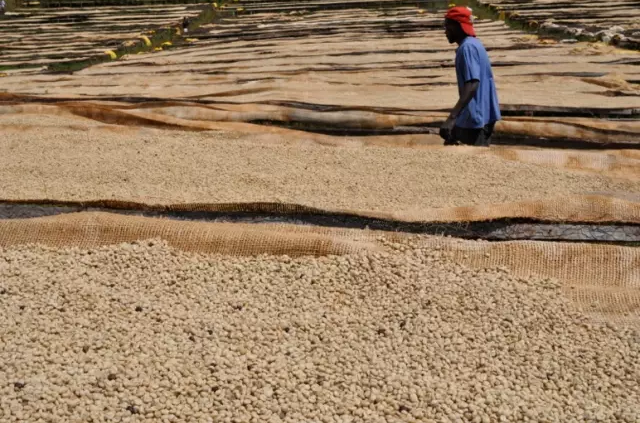
Coffee Farm in Kenya
Tanzania: located in southern Kenya, thanks to Mount Kilimanjaro, the coffee here is complex, fruity, fresh and active in acidity and similar to Kenyan coffee.
Rwanda: located in the Great Lakes region of eastern Africa, Rwandan coffee usually has fresh red fruit aromas, as well as berries and flowers.
Burundi: next to Rwanda, the quality coffee here is usually fruity, mellow and even reminiscent of fruit juices.
Central America
With the rosy summer of Panama and the Blue Mountains of Jamaica, the quality of coffee in Central America is certainly not to be underestimated. In addition, Honduras, Guatemala, El Salvador and even Hawaii are all places worth trying.
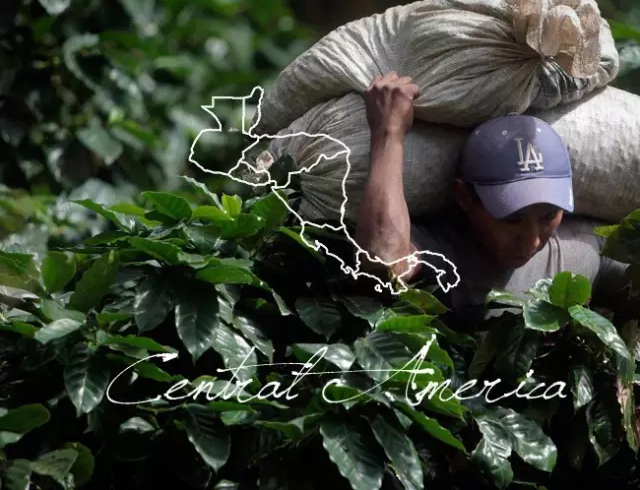
Jamaica: when it comes to Jamaican coffee, the first thing that comes to mind is the Blue Mountains, which has long been among the "most expensive coffee". Blue Mountain Coffee is pure, delicate, sweet and juicy. However, not all Blue Mountain Coffee can use this precious name. Only coffee grown in Blue Mountain between 9-1500 meters above sea level is eligible to use the name "Jamaica Blue Mountain". As Japan has almost got most of the output of blue mountain coffee, the price of blue mountain on the market is on the high side, and many brands have launched "blue mountain flavor coffee".
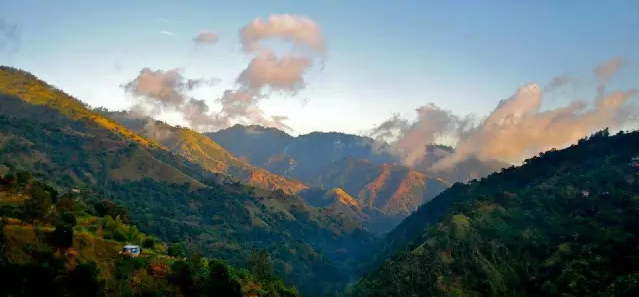
Blue Mountain
Panama: as a coffee producer, Panama has some of the most ideal local features: high-altitude plantations, fertile volcanic soil, cool climate and extraordinary species diversity. Almost all Arabica coffee beans are grown in Panama. Of course, when it comes to top coffee, you can't get around the local emerald estate. Thanks to the unique local conditions, the cool climate and frequent fog make the rose summer here with explosive floral and citrus aromas, complex flavor, tranquil and delicate taste. The quality is so good, the price is naturally not cheap, and some people even jokingly call it the "Lafite" of coffee.

Guatemala: the coffee from here is rich in flavor, from elegant and tranquil floral and fruity aromas to rich chocolate flavors. Antigua is the most famous producing area in Guatemala and one of the best-known producing areas in the world.
El Salvador: thanks to Yowo's volcanic soil, El Salvador is also one of the high-quality coffee producers in Central America. The coffee from here is famous for its sweet taste and balanced taste, and the acidity is supple and pleasant.
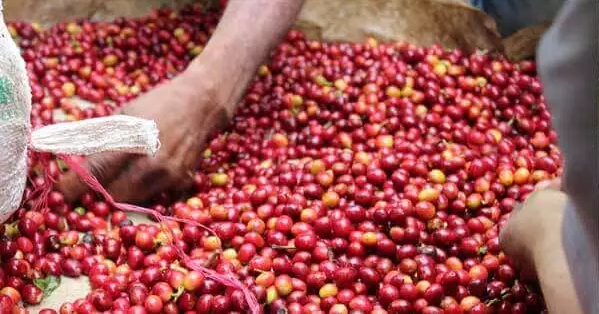
Finca San Nicolas in El Salvador is also one of the most expensive coffee in the world.
Hawaii: the pozzolanic soil of Hawaii is a favorable condition for growing quality coffee. However, due to the limitation of altitude, the coffee here is refreshing and easy to drink, but lacks complexity. KONA is a famous producing area of Hawaii.
Honduras: this is the largest coffee producer in Central America. High-quality coffee from Honduras usually has rich, complex fruit aromas and refreshing acidity.
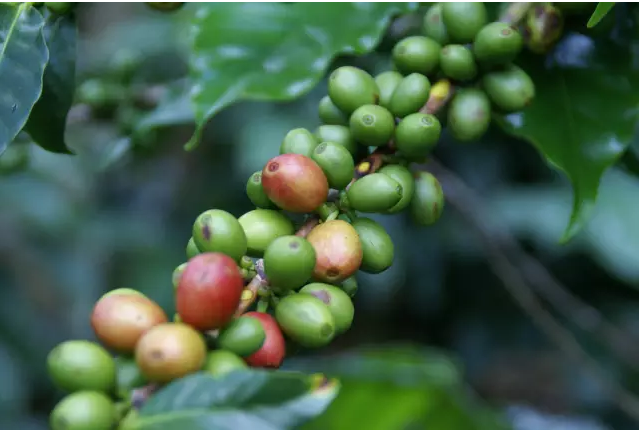
Costa Rica: several producing areas in the country have different flavors, usually pure and sweet, light and elegant.
Nicaragua: the coffee here tastes very diverse, usually fruity and pure acidity.
Cuba, Dominica: the coffee here has the typical taste of island coffee, mild and pure, low acidity.
South America
South America is already the largest coffee-producing continent, with Brazil alone accounting for nearly half of the world's coffee production. In addition to these large-scale coffee farms, some small farmers from high-altitude areas such as Colombia and Ecuador have also begun to attract attention.
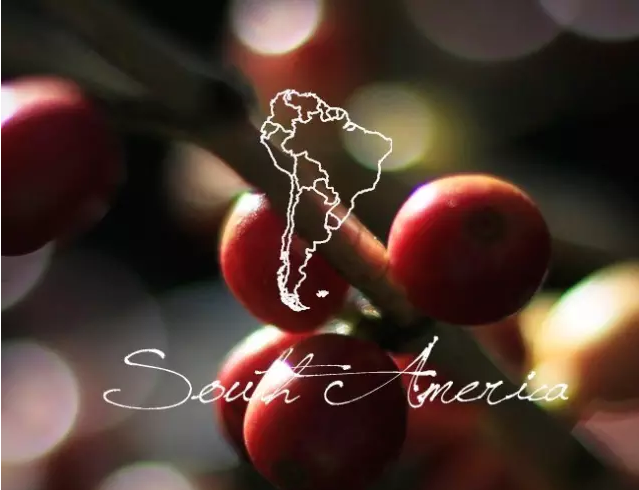
Brazil: Brazil has always been the world's largest coffee producer, accounting for almost half of the world's coffee production. Usually, high-quality coffee from Brazil has a mellow, sweet taste and low acidity, with aromas similar to chocolate, nuts and caramel. Brazil's coffee producing areas are generally concentrated in the south, although it is located in the plateau, but usually only 1000m above sea level, due to the climate, it is difficult to find top quality coffee.
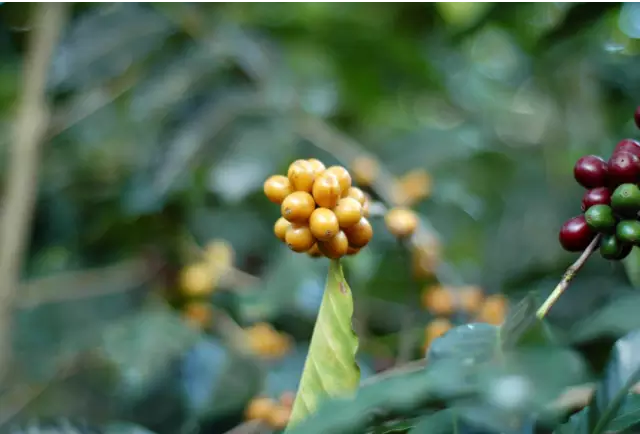
Yellow bourbon, Brazil
Colombia: thanks to the high altitude surrounded by the Andean foothills, Colombian coffee is rich in flavor and excellent in quality, some with strong chocolate and nutty aromas, and some with jam-like sweetness. Coffee from Cauca (Cauca), Antioquia (Antioquia) and Risaralda (Lisakarda province) is usually of good quality.
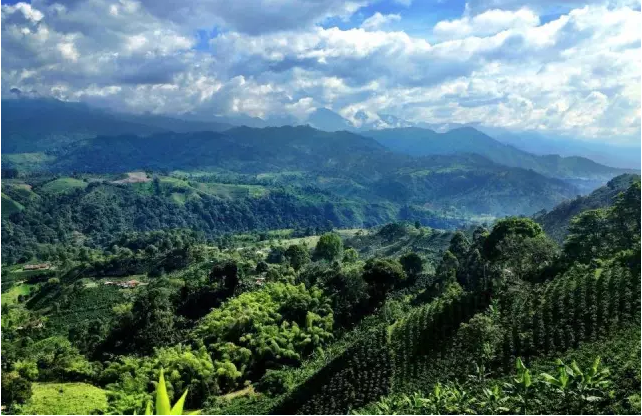
Ecuador: high-quality coffee from here is usually sweet and refreshing in acidity. Coffee in some high-altitude areas is of high quality, such as coffee beans from Loja (Loha) have a complex and charming flavor.
Venezuela: coffee here is usually sweet and low in acidity.
Asia
Asia also plays an important role in the coffee world. Indonesia, Papua New Guinea, Yemen and even Yunnan all produce high-quality coffee with a unique style.
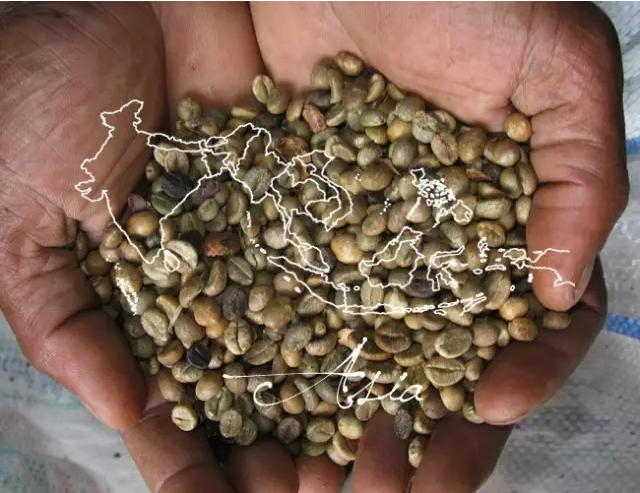
Indonesia: Indonesia is probably the most famous place of origin in Asia, where the often heard "Manning" is produced. However, the term "Manning" is neither a coffee producing area nor a coffee breed. It is actually Mandheling, a coffee grower on Sumatra. Mandenin coffee in Sumatra has a unique herbaceous, woody aroma, but is usually low in acidity (mainly because of the local semi-washing treatment). Apart from Sumatra, Java and Sulawesi in Indonesia are all good quality places.
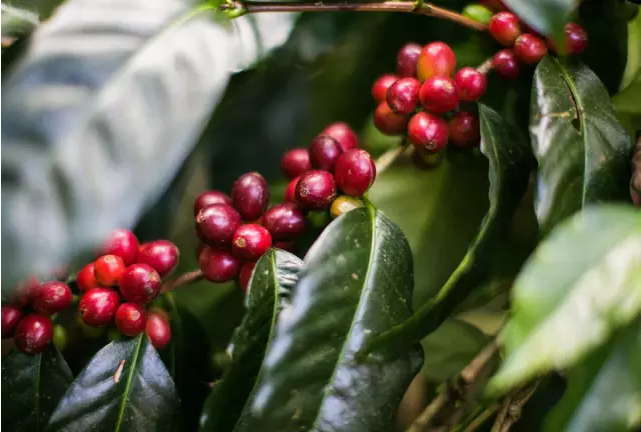
Tibika variant Coffee from Indonesia
In Indonesia, there is another kind of coffee known as "expensive"-civet coffee, also known as Kopi Luwak. Processed by coffee beans in the feces of civets after eating coffee fruits, prices have skyrocketed in the past 10 years because of its unique aroma and hype from various merchants.
However, at present, most of the civets on the market are only nominal fakes, and almost all of the genuine ones come from captive civets caught by coffee farmers on the island. This kind of concentrated feeding environment is extremely bad, most of the civets used are seriously poor, and the mortality rate is extremely high. Even authentic coffee beans, which are fed artificially and processed in batches, no longer have the characteristics that were first given by natural conditions in terms of style, and can only be replaced by artificial spices added in the late deodorization process. Therefore, in terms of humanitarian and appreciative value, many senior coffee experts advocate boycotting this cruel sky-high price of coffee.
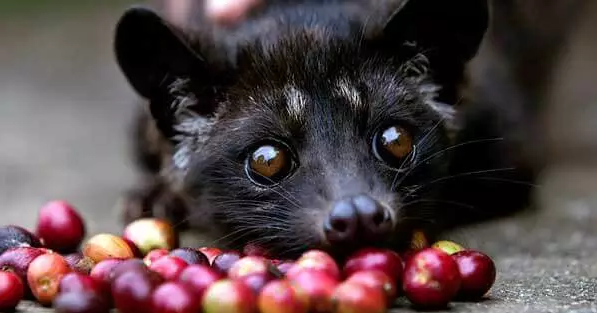
Musk cat
India: India's coffee production is mainly concentrated in the southern plateau, low altitude, coupled with the regular monsoon climate, so that the production of Roberta here is extremely high. Of course, India also grows better Arabica varieties, but limited by altitude, although the coffee taste is mellow, slightly sour and easy to drink, but fruity and complexity are rare.
Papua New Guinea: although close to Indonesia, the flavor of coffee here is very different from that of Indonesian coffee. The quality coffee from here usually has a dense taste and has excellent sweetness and complexity.
Yemen: Yemeni coffee has a unique taste and a rich and wild style.
Yunnan: Yunnan-Guizhou Plateau also produces good quality coffee. Yunnan coffee is usually low in acidity, but it has a mellow taste and a well-balanced flavor, often with aromas of nuts, caramel and even chocolate.
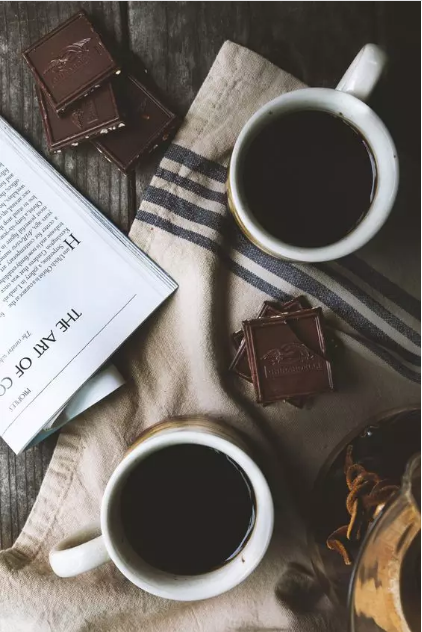
Due to space constraints, there are still many places that cannot be discussed, but in fact, although the prices of coffee from various producing areas are high and low, they are not high or low. What you like is the best. There is no need to be infatuated with Yega Xuefei in Ethiopia, nor too obsessed with the expensive summer of the Jade Manor. Try different flavors in different producing areas, and you may find different things.
Important Notice :
前街咖啡 FrontStreet Coffee has moved to new addredd:
FrontStreet Coffee Address: 315,Donghua East Road,GuangZhou
Tel:020 38364473
- Prev
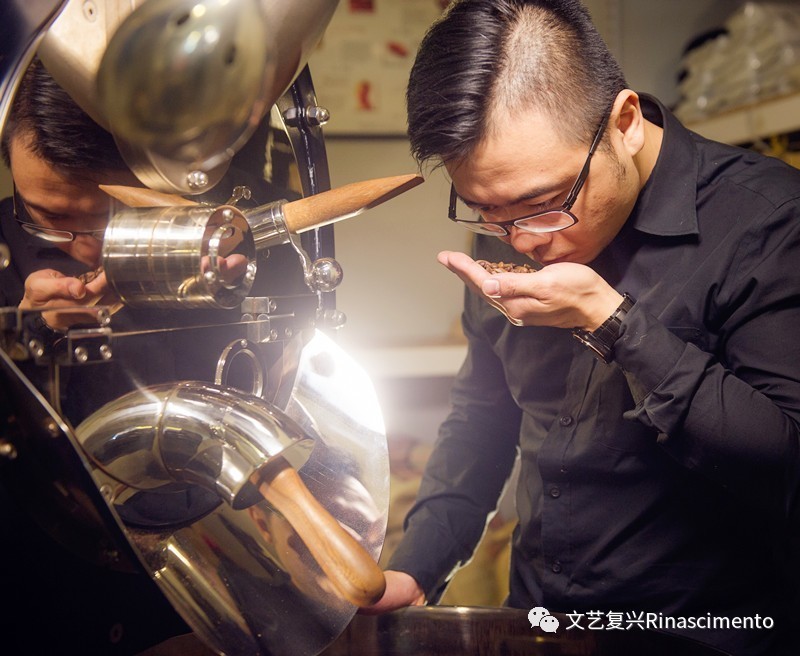
Forum | Lai Yuquan: coffee flavor trend
Have you ever thought about where you are in the coffee wave? Farmer is a writer, they write a screenplay with God, Roaster is the director, they interpret and translate, even the screenwriter, the bar player (Barista / Brewer) is the actor, responsible for singing the whole play well, the consumer (Customer) is the audience, he
- Next

Big data | how many cafes are there in China? What is their living condition?
It's all too fast. Today, "Ka Men" and "Meituan Dianping Research Institute" launched the first issue of beverage industry data report. The number of cafes in China exceeded 100000 in 2016, according to the report. This is the worst time for coffee, this is the best time for coffee. In the era of experiential consumption, today, when the customer group is getting younger and iterative, there has never been a new category.
Related
- What brand of black coffee is the most authentic and delicious? what are the characteristics of the flavor of the authentic Rose Summer Black Coffee?
- Introduction to the principle and characteristics of the correct use of mocha pot A detailed course of mocha pot brewing coffee is described in five steps.
- Which is better, decaf or regular coffee? how is decaf made?
- How much is a bag of four cat coffee?
- How about four Cat Coffee or Nestle Coffee? why is it a cheap scam?
- Which is better, Yunnan four Cats Coffee or Nestle Coffee? How about cat coffee? is it a fake scam? why is it so cheap?
- How about Cat Coffee? what grade is a hoax? which instant coffee tastes better, four Cat Coffee, Nestle Coffee or G7 coffee?
- Process flow chart of coffee making-Starbucks coffee making process what coffee tastes good at Starbucks
- The top ten best coffee beans in the world Rose summer coffee or Tanzanian coffee tastes good
- Yunnan four cat coffee is good to drink?_four cat coffee is a big brand? four cat blue mountain coffee is fake?

